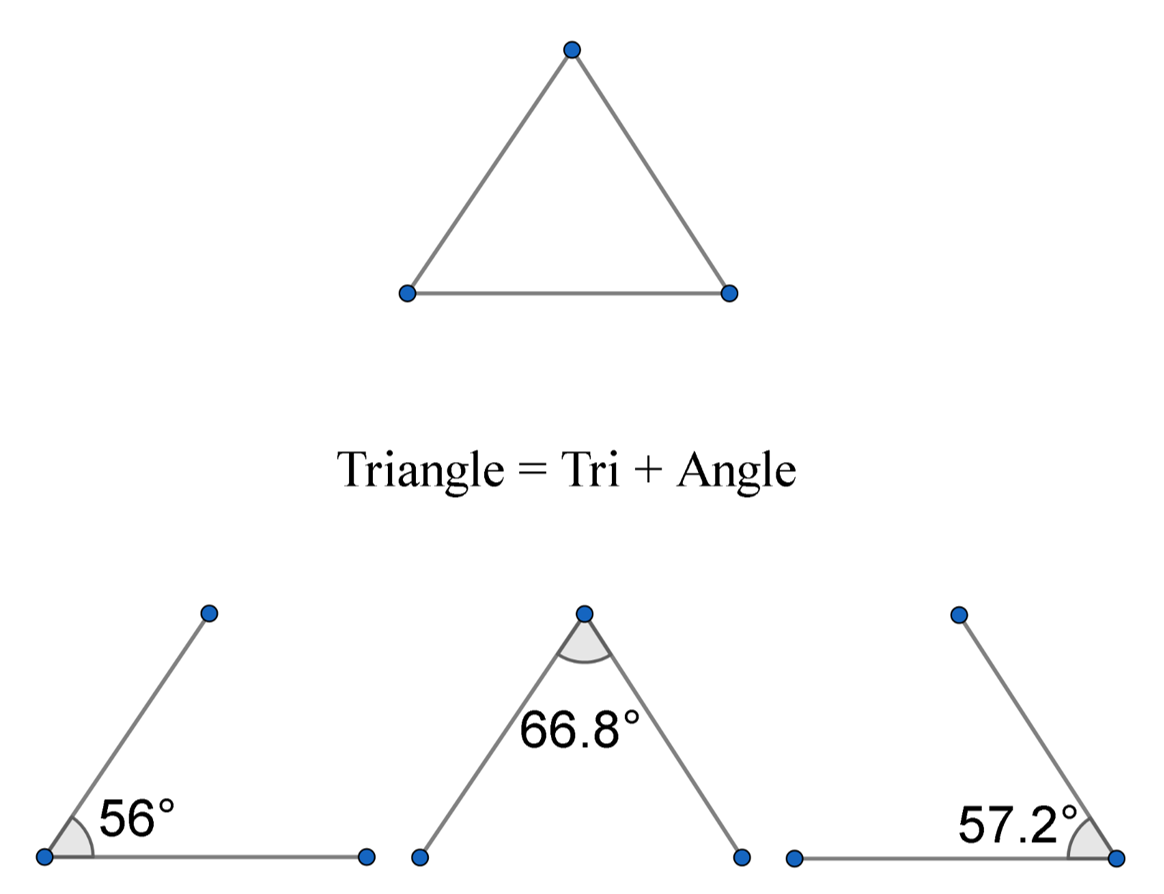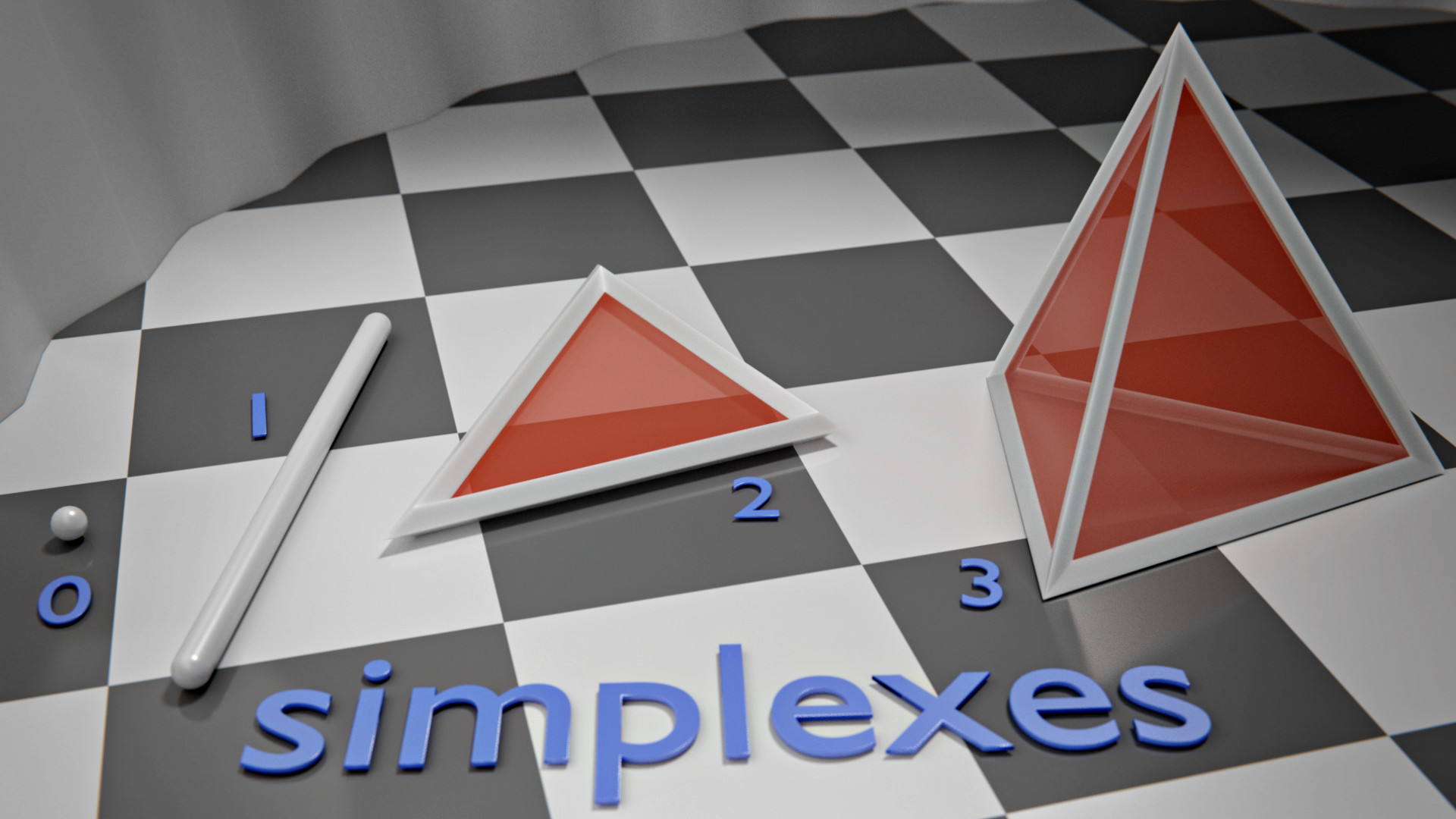|
Triangle Strip
In computer graphics, a triangle strip is a subset of triangles in a triangle mesh with shared vertices, and is a more memory-efficient method of storing information about the mesh. They are more efficient than un-indexed lists of triangles, but usually equally fast or slower than indexed triangle lists. The primary reason to use triangle strips is to reduce the amount of data needed to create a series of triangles. The number of vertices stored in memory is reduced from to , where is the number of triangles to be drawn. This allows for less use of disk space, as well as making them faster to load into RAM. For example, the four triangles in the diagram, without using triangle strips, would have to be stored and interpreted as four separate triangles: ABC, CBD, CDE, and EDF. However, using a triangle strip, they can be stored simply as a sequence of vertices ABCDEF. This sequence would be decoded as a set of triangles with vertices at ABC, BCD, CDE and DEF - although the ... [...More Info...] [...Related Items...] OR: [Wikipedia] [Google] [Baidu] |
Computer Graphics
Computer graphics deals with generating images with the aid of computers. Today, computer graphics is a core technology in digital photography, film, video games, cell phone and computer displays, and many specialized applications. A great deal of specialized hardware and software has been developed, with the displays of most devices being driven by graphics hardware, computer graphics hardware. It is a vast and recently developed area of computer science. The phrase was coined in 1960 by computer graphics researchers Verne Hudson and William Fetter of Boeing. It is often abbreviated as CG, or typically in the context of film as Computer-generated imagery, computer generated imagery (CGI). The non-artistic aspects of computer graphics are the subject of Computer graphics (computer science), computer science research. Some topics in computer graphics include user interface design, sprite (graphics), sprite graphics, Rendering (computer graphics), rendering, ray tracing (graphics) ... [...More Info...] [...Related Items...] OR: [Wikipedia] [Google] [Baidu] |
Pole (geometry)
In geometry, a pole and polar are respectively a point and a line that have a unique reciprocal relationship with respect to a given conic section. Polar reciprocation in a given circle is the transformation of each point in the plane into its polar line and each line in the plane into its pole. Properties Pole and polar have several useful properties: * If a point P lies on the line ''l'', then the pole L of the line ''l'' lies on the polar ''p'' of point P. * If a point P moves along a line ''l'', its polar ''p'' rotates about the pole L of the line ''l''. * If two tangent lines can be drawn from a pole to the conic section, then its polar passes through both tangent points. * If a point lies on the conic section, its polar is the tangent through this point to the conic section. * If a point P lies on its own polar line, then P is on the conic section. * Each line has, with respect to a non-degenerated conic section, exactly one pole. Special case of circles The pole ... [...More Info...] [...Related Items...] OR: [Wikipedia] [Google] [Baidu] |
Graphics Cards
A graphics card (also called a video card, display card, graphics adapter, VGA card/VGA, video adapter, display adapter, or mistakenly GPU) is an expansion card which generates a feed of output images to a display device, such as a computer monitor. Graphics cards are sometimes called discrete or dedicated graphics cards to emphasize their distinction to integrated graphics. A graphics processing unit that performs the necessary computations is the main component of a graphics card, but the acronym "GPU" is sometimes also used to refer to the graphics card as a whole. Most graphics cards are not limited to simple display output. The graphics processing unit can be used for additional processing, which reduces the load from the central processing unit. Additionally, computing platforms such as OpenCL and CUDA allow using graphics cards for general-purpose computing. Applications of general-purpose computing on graphics cards include AI training, cryptocurrency mining, and mole ... [...More Info...] [...Related Items...] OR: [Wikipedia] [Google] [Baidu] |
Computer Graphics
Computer graphics deals with generating images with the aid of computers. Today, computer graphics is a core technology in digital photography, film, video games, cell phone and computer displays, and many specialized applications. A great deal of specialized hardware and software has been developed, with the displays of most devices being driven by graphics hardware, computer graphics hardware. It is a vast and recently developed area of computer science. The phrase was coined in 1960 by computer graphics researchers Verne Hudson and William Fetter of Boeing. It is often abbreviated as CG, or typically in the context of film as Computer-generated imagery, computer generated imagery (CGI). The non-artistic aspects of computer graphics are the subject of Computer graphics (computer science), computer science research. Some topics in computer graphics include user interface design, sprite (graphics), sprite graphics, Rendering (computer graphics), rendering, ray tracing (graphics) ... [...More Info...] [...Related Items...] OR: [Wikipedia] [Google] [Baidu] |
Triangle Fan
frame, Set of connected triangles described by vertices A through F. A triangle fan is a primitive in 3D computer graphics that saves on storage and processing time. It describes a set of connected triangles that share one central vertex (unlike the triangle strip that connects the next vertex point to the last two used vertices to form a triangle), possibly within a triangle mesh. If is the number of triangles in the fan, the number of vertices describing it is . This is a considerable improvement over the vertices that are necessary to describe the triangles separately. The graphics pipeline can take advantage by only performing the viewing transformations and lighting calculations once per vertex. Triangle fans are deprecated in Direct3D10 and later. Any convex polygon In geometry, a convex polygon is a polygon that is the boundary of a convex set. This means that the line segment between two points of the polygon is contained in the union of the interior and the bounda ... [...More Info...] [...Related Items...] OR: [Wikipedia] [Google] [Baidu] |
Triangle
A triangle is a polygon with three edges and three vertices. It is one of the basic shapes in geometry. A triangle with vertices ''A'', ''B'', and ''C'' is denoted \triangle ABC. In Euclidean geometry, any three points, when non- collinear, determine a unique triangle and simultaneously, a unique plane (i.e. a two-dimensional Euclidean space). In other words, there is only one plane that contains that triangle, and every triangle is contained in some plane. If the entire geometry is only the Euclidean plane, there is only one plane and all triangles are contained in it; however, in higher-dimensional Euclidean spaces, this is no longer true. This article is about triangles in Euclidean geometry, and in particular, the Euclidean plane, except where otherwise noted. Types of triangle The terminology for categorizing triangles is more than two thousand years old, having been defined on the very first page of Euclid's Elements. The names used for modern classification a ... [...More Info...] [...Related Items...] OR: [Wikipedia] [Google] [Baidu] |
Simplicial
In geometry, a simplex (plural: simplexes or simplices) is a generalization of the notion of a triangle or tetrahedron to arbitrary dimensions. The simplex is so-named because it represents the simplest possible polytope in any given dimension. For example, * a 0-dimensional simplex is a point, * a 1-dimensional simplex is a line segment, * a 2-dimensional simplex is a triangle, * a 3-dimensional simplex is a tetrahedron, and * a 4-dimensional simplex is a 5-cell. Specifically, a ''k''-simplex is a ''k''-dimensional polytope which is the convex hull of its ''k'' + 1 vertices. More formally, suppose the ''k'' + 1 points u_0, \dots, u_k \in \mathbb^ are affinely independent, which means u_1 - u_0,\dots, u_k-u_0 are linearly independent. Then, the simplex determined by them is the set of points : C = \left\ This representation in terms of weighted vertices is known as the barycentric coordinate system. A regular simplex is a simplex that is also a regular polytope. ... [...More Info...] [...Related Items...] OR: [Wikipedia] [Google] [Baidu] |
SGI Algorithm
The SGI algorithm creates triangle strips from a set of triangles. It was published by K. Akeley, P. Haeberli, and D. Burns as a C program named "tomesh.c" for use with Silicon Graphics' IRIS GL IRIS GL (Integrated Raster Imaging System Graphics Library) is a proprietary graphics API created by Silicon Graphics (SGI) in the early 1980s for producing 2D and 3D computer graphics on their IRIX-based IRIS graphical workstations. Later SGI re ... API.{{cite conference , author1=Francine Evans , author2=Steven Skiena , author3=Amitabh Varshney , name-list-style=amp , title = Optimizing triangle strips for fast rendering , conference = Visualization 1996 , publisher = IEEE , pages = 319–326 , year = 1996 , url = http://www.cs.umd.edu/gvil/papers/av_ts.pdf , accessdate = 2012-08-31 The algorithm operates on the set of triangles that have not yet been added to a triangle strip, starting with the entire set of input triangles. Triangles are greedily added to a strip until no t ... [...More Info...] [...Related Items...] OR: [Wikipedia] [Google] [Baidu] |
IRIS GL
IRIS GL (Integrated Raster Imaging System Graphics Library) is a proprietary graphics API created by Silicon Graphics (SGI) in the early 1980s for producing 2D and 3D computer graphics on their IRIX-based IRIS graphical workstations. Later SGI removed their proprietary code, reworked various system calls, and released IRIS GL as the industry standard OpenGL. See also * Silicon Graphics Image for file extension .iris * SGI IRIS The SGI IRIS series of terminals and workstations from Silicon Graphics was produced in the 1980s and 1990s. IRIS is an acronym for Integrated Raster Imaging System. Overview 68000 The early systems up to IRIS 3000 use the Motorola 68000 series ... * IrisVision - first port to PCs References *{{Cite conference , first = James , last = Clark , title = The Geometry Engine: A VLSI Geometry System for Graphics , book-title = Proceedings of the 9th annual conference on Computer graphics and interactive techniques , pages = 127–133 , ... [...More Info...] [...Related Items...] OR: [Wikipedia] [Google] [Baidu] |
Glossary Of Computer Graphics
This is a glossary of terms relating to computer graphics. For more general computer hardware terms, see glossary of computer hardware terms. 0–9 A B C D E F G H I K L M N O P Q R S T ... [...More Info...] [...Related Items...] OR: [Wikipedia] [Google] [Baidu] |
NP-complete
In computational complexity theory, a problem is NP-complete when: # it is a problem for which the correctness of each solution can be verified quickly (namely, in polynomial time) and a brute-force search algorithm can find a solution by trying all possible solutions. # the problem can be used to simulate every other problem for which we can verify quickly that a solution is correct. In this sense, NP-complete problems are the hardest of the problems to which solutions can be verified quickly. If we could find solutions of some NP-complete problem quickly, we could quickly find the solutions of every other problem to which a given solution can be easily verified. The name "NP-complete" is short for "nondeterministic polynomial-time complete". In this name, "nondeterministic" refers to nondeterministic Turing machines, a way of mathematically formalizing the idea of a brute-force search algorithm. Polynomial time refers to an amount of time that is considered "quick" for a det ... [...More Info...] [...Related Items...] OR: [Wikipedia] [Google] [Baidu] |




